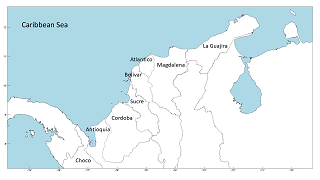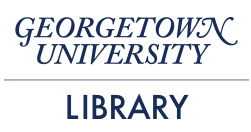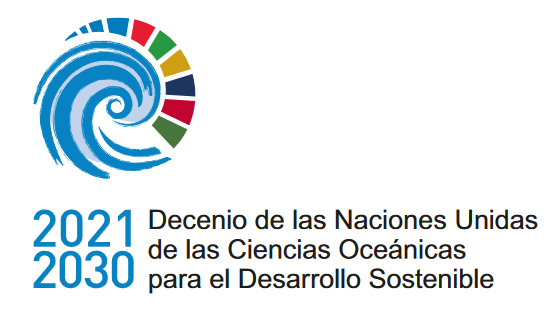Diagnóstico de los desembarques pesqueros artesanales en la costa del Caribe colombiano a través de indicadores
DOI:
https://doi.org/10.47193/mafis.3722024010504Palabras clave:
Nivel trófico, vulnerabilidad, arte de pesca, desembarquesResumen
Los desembarques de la pesca artesanal en el Caribe colombiano entre 2013 y 2021 se caracterizaron mediante dos indicadores: el nivel trófico y la vulnerabilidad en los desembarques de pesca. Los indicadores mostraron una tendencia decreciente significativa en la vulnerabilidad y el nivel trófico, lo que sugiere que la pesquería se dirige cada vez más a especies de baja vulnerabilidad y nivel trófico, desplazándose así hacia abajo en la trama alimentaria. El patrón general de indicadores no fue uniforme en el espacio. La interacción de incidencia de las artes y especies desembarcadas explicó la trayectoria de los indicadores a nivel de Departamentos. Las artes de pesca capturaron a diferentes niveles de la rama alimentaria, siendo las redes de enmalle responsables de la mayor parte de los desembarques. En comparación con un estudio anterior, el grupo de especies de peces que sustentan la mayoría de los desembarques ha cambiado hacia especies con menor vulnerabilidad, es decir, resistentes a la mortalidad por pesca debido a la evolución de su historia de vida, pero aún con hábitos depredadores en general. Una excepción notable es Mugil incilis, una especie con un nivel trófico bajo que se ha convertido en la tercera en importancia de desembarques en la base de datos.
Descargas
Referencias
Andrade CA, Barton ED. 2005. The Guajira upwelling system. Cont Shelf Res. 25: 1003-1022. DOI: http://doi.org/10.1016/j.csr.2004.12.012
Boettiger C, Lang DT, Wainwright PC. 2012. rfishbase: exploring, manipulating and visualizing FishBase data from R. J. Fish Biol. 81(6): 2030-2039. DOI: https://doi.org/10.1111/j.1095-8649.2012.03464.x
Breslow SJ, Sojka B, Barnea R, Basurto X, Carothers C, Charnley S, Coulthard S, Dolsak N, Donatuto J, Garcia-Quijano C, et al. 2016. Conceptualizing and operationalizing human wellbeing for ecosystem assessment and management. Environ Sci Policy. 66: 250-259. DOI: https://doi.org/10.1016/j.envsci.2016.06.023
Cheung WWL, Lam VWY, Sarmiento JL, Kearney K, Watson R, Zeller D, Pauly D. 2010. Large-scale redistribution of maximum fisheries catch potential in the global ocean under climate change. Glob Chang Biol. 16: 24-35. DOI: https://doi.org/10.1111/j.1365-2486.2009.01995.x
Cheung WWL, Pitcher TJ, Pauly D. 2005. A fuzzy logic expert system to estimate intrinsic extinction vulnerabilities of marine fishes to fishing. Biol Conserv. 124 (1): 97-111. DOI: https://doi.org/10.1016/j.biocon.2005.01.017
Cheung WWL, Watson R, Morato T, Pitcher T, Pauly D. 2007. Intrinsic vulnerability in the global fish catch. Mar Ecol Prog Ser. 333: 1-12. DOI: https://doi.org/10.3354/meps333001
Coll M, Shannon LJ, Kleisnerd KM, Juan-Jordá MJ, Bundy A, Akogluh AG, Banaru D, Boldt JL, Borges MF, Cook A, et al. 2016. Ecological indicators to capture the effects of fishing on biodiversity and conservation status of marine ecosystems. Ecol Indic. 60: 947-962. DOI: http://doi.org/10.1016/j.ecolind.2015.08.048
Duarte LO, Cuervo C, Vargas O, Gil-Manrique B, Tejeda K, De León G, E. Isaza E, Cuello F, Curiel J, Manjarrés-Martínez L, Reyes-Ardila H. 2022. Estadísticas de desembarco y esfuerzo de las pesquerías artesanales de Colombia 2021. Informe técnico. Santa Marta: Autoridad Nacional de Acuicultura y Pesca (AUNAP), Universidad del Magdalena. 169 p.
Duarte LO, Diaz-Vesga R, Cuello F, Manjarres L. 2013. Cambio estacional en la fauna acompañante de la pesqueria artisanal de arrastre de camaron del Golfo de Salamanca, Mar Caribe de Colombia. Acta Biol Colomb. 18 (2): 319-328.
Duarte LO, Manjarrés-Martínez L, De la Hoz‐M J, Cuello F, Altamar J. 2018. Estado de los principales recursos pesqueros de Colombia. Análisis de indicadores basados en tasas de captura, tallas de captura y madurez. Autoridad Nacional de Acuicultura y Pesca (AUNAP), Universidad del Magdalena.
[FAO] Food and Agriculture Organization of the United Nations. 2003. Fisheries management. 2. The ecosystem approach to fisheries. FAO Tech Guidel Responsib Fish. 4 (2). 112 p.
Froese R, Pauly D. editors. 2023. FishBase. World Wide Web electronic publication. https://www.fishbase.org.
García CB. 2010. Conocimiento tradicional: lo que los pescadores artesanales del Caribe colombiano tienen para decirnos. Pan Am J Aquat Sci. 5 (1): 78-90.
García CB, Contreras CC. 2011. Trophic levels of fish species of commercial importance in the Colombian Caribbean. Rev Biol Trop. 59 (3): 1195-1203.
García CB, Ramírez J. 2016. Perceived length at first maturity in the lane snapper, Lutjanus synagris (Linnaeus, 1758) (Perciformes: Lutjanidae), along the Caribbean coast of Colombia. Pan Am J Aquat Sci. 11 (1): 60-69.
Harrell F. 2023. Hmisc: Harrell Miscellaneous. R package version 5.0-1. https://CRAN.R-project.org/package=Hmisc.
Hollins J, Thambithurai D, Köeck B, Crespel A, Bailey DM, Cooke SJ, Lindström J, Parsons KJ, Killen SS. 2018. A physiological perspective on fisheries-induced evolution. Evol Appl. 11 (5): 561-576. DOI: https://doi.org/10.1111/eva.12597
Kleisner K, Mansour H, Pauly D. 2014. Region-based MTI: resolving geographic expansion in the Marine Trophic Index. Mar Ecol Prog Ser. 512: 185-199. DOI: https://doi.org/10.3354/meps10949
Lam VWY, Allison EH, Bell JD, Blythe J, Cheung, WWL, Frölicher TL, Gasalla MA, Sumaila UR. 2020. Climate change, tropical fisheries, and prospects for sustainable development. Nat Rev Earth Environ. 1: 440-454. DOI: https://doi.org/10.1038/s43017-020-0071-9
Lindop A, Chen T, Zylich K, Zeller D. 2015. A reconstruction of Colombia’s marine fisheries catches. Working Paper. 2015-32. Vancouver: Fisheries Centre, University of British Columbia. 16 p.
Link, JS. 2018. System-level optimal yield: increased value, less risk, improved stability, and better fisheries. Can J Fish Aquat Sci. 75: 1-16. DOI: https://doi.org/10.1139/cjfas-2017-0250
McLeod AI. 2011. Kendall: Kendall rank correlation and Mann-Kendall trend test. R package version 2.2. https://CRAN.R-project.org/package=Kendall.
Ministerio de Agricultura. 2020. Cadenas pecuarias, pesqueras y acuícolas. [accessed 2023 Jun 18]. https://sioc.minagricultura.gov.co/Acuicultura/Documentos/2020-12-30%20Cifras%20Sectoriales.pdf.
Moutopoulos DK, Libralato S, Solidoro C, Erzini K, Stergiou KI. 2014. Effect of landings data disaggregation on ecological indicators. Mar Ecol Prog Ser. 509: 27-38. DOI: https://doi.org/10.3354/meps10856
Page E, Derrick B, Coulter A, White R, Ang M, Dunstan D, Hood L, Relano V, Tsui G, van der Meer L, Pauly D. 2020. South America: updated catch reconstructions to 2018. In: Derrick M, Khalfallah V, Relano, Zeller D, Pauly D, editors. Updating to 2018 the 1950-2010 marine catch reconstructions of the Sea Around Us. Part II: the Americas and Asia-Pacific. Fish Cent Res Rep. 28 (6): 279-312.
Palomares M, Pauly D. editors. 2023. SeaLifeBase. World Wide Web electronic publication. https://www.sealifebase.ca.
Pauly D, Christensen V, Dalsgaard J, Froese R, Torres F Jr. 1998. Fishing down marine food webs. Science. 279: 860-863. DOI: https://doi.org/10.1126/science.279.5352.860
Pauly D, Palomares M. 2005. Fishing down marine food webs: it is far more pervasive than we thought. Bull Mar Sci. 76 (2): 197-211.
Pauly D, Zeller D. 2016. Catch reconstructions reveal that global marine fisheries catches are higher than reported and declining. Nature Commun. 7: 10244. DOI: https://doi.org/10.1038/ncomms10244
Pauly D, Zeller D, Palomares M, editors. 2020. Sea around us concepts, design and data. Vancouver: Sea Around Us, University of British Columbia. [accessed 2023 Jun]. http://www.seaaroundus.org.
Ricaurte-Villota C, Bastidas-Salamanca ML. editors. 2017. Regionalización oceanográfica: una visión dinámica del Caribe. Serie de Publicaciones Especiales de INVEMAR 14. Santa Marta: Instituto de Investigaciones Marinas y Costeras (INVEMAR). 180 p.
Saavedra-Díaz LM, Rosenberg AA, Marín-López B. 2015. Social perceptions of Colombian small-scale marine fisheries conflicts: insights for management. Mar Policy. 56: 61-70. DOI: http://doi.org/10.1016/j.marpol.2014.11.026
Salazar-Pérez C, Choles-Rodríguez E, Manjarréz-Martínez L. 2020. Short-term changes in demersal fish assemblages exploited by an artisanal set gill net fishery in the Caribbean Sea (Colombia). Cien Mar. 46 (1): 39-56. DOI: https://doi.org/10.7773/cm.v46i1.3041
Stergiou KI, Moutopoulos, DK, Casal, HJA, Herzini, K. 2007. Trophic signatures of small-scale fishing gears: implications for conservation and management. Mar Ecol Prog Ser. 333: 117-128. DOI: https://doi.org/10.3354/meps333117
Vides MP, Sierra-Correa PC. editors. 2003. Atlas de paisajes costeros de Colombia. Serie Publicaciones Generales INVEMAR 16. Santa Marta: Instituto de Investigaciones Marinas y Costeras (INVEMAR). 132 p.
Wickham H. 2016. ggplot2: Elegant graphics for data analysis. New York: Springer-Verlag.
Wielgus J, Zeller D, Caicedo-Herrera D, Sumaila, R. 2010. Estimation of fisheries removals and primary economic impact of the small-scale and industrial marine fisheries in Colombia. Mar Policy. 34: 506-513. DOI: https://doi.org/10.1016/j.marpol.2009.10.006
Wilke CO. 2020. cowplot: Streamlined Plot Theme and Plot Annotations for ‘ggplot2’. R package version 1.1.1. https://CRAN.R-project.org/package=cowplot.

Descargas
Publicado
Número
Sección
Licencia
Derechos de autor 2024 Camilo B. García, Luis O. Duarte

Esta obra está bajo una licencia internacional Creative Commons Atribución-NoComercial-CompartirIgual 4.0.
Los autores de los artículos publicados en Marine and Fishery Sciences conservan los derechos de autor de sus artículos, a excepción de las imágenes de terceros y otros materiales añadidos por Marine and Fishery Sciences, que están sujetos a los derechos de autor de sus respectivos propietarios. Por lo tanto, los autores son libres de difundir y volver a publicar sus artículos, sujeto a los requisitos de los propietarios de derechos de autor de terceros y sujeto a que la publicación original sea completamente citada. Los visitantes también pueden descargar y reenviar artículos sujetos a los requisitos de citas. La capacidad de copiar, descargar, reenviar o distribuir cualquier material siempre está sujeta a los avisos de derechos de autor que se muestran. Los avisos de copyright deben mostrarse de manera prominente y no pueden borrarse, eliminarse u ocultarse, total o parcialmente. El autoalmacenamiento en servidores y repositorios de preimpresión está permitido para todas las versiones.
Esta revista ofrece a los autores una política de acceso abierto. Los usuarios pueden leer, descargar, copiar, distribuir, imprimir, buscar o vincular los textos completos de los artículos, o usarlos para cualquier otro propósito legal dentro de la licencia Creative Commons 4.0 (BY-NC-SA), sin solicitar permiso previo del editor o del autor. Esto está de acuerdo con la definición BOAI de acceso abierto.






















